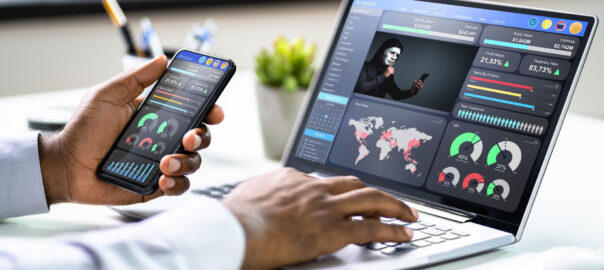Cyber threats will continue to grow in complexity and frequency in 2025. Attacks targeting businesses of all sizes require companies to prioritize robust cybersecurity strategies. Yet even strong security practices may not fully protect against the financial impacts of a breach. This is where cybersecurity insurance will become essential in 2025, offering financial protection and resources to aid recovery.
Here’s Why Cybersecurity Insurance Is Crucial For Businesses In 2025
1. Rising Frequency and Sophistication of Attacks
Cybercriminals use advanced tactics, like phishing and ransomware, to breach secure systems. Cybersecurity insurance helps manage the financial fallout, covering data recovery, business interruption, and, in some cases, ransom payments.
2. High Costs of Cyber Incidents
Expenses from cyber incidents are at an all-time high. Adding Cybersecurity insurance in 2025 helps cover essential costs like data restoration, legal fees, and customer notifications—particularly valuable for small and medium-sized businesses.
3. Compliance with Evolving Regulations
Strict data regulations like GDPR and HIPAA will be enforced across industries in 2025. Cybersecurity insurance supports regulatory investigations and can cover fines, helping businesses remain compliant even after a breach.
4. Cybersecurity Insurance Protects Business from Interruption in 2025
Cyberattacks often lead to downtime and lost revenue. For industries reliant on digital operations, cybersecurity insurance helps cover these losses, allowing companies to recover financially while restoring their systems.
5. Enhanced Incident Response Resources
Cybersecurity insurance often includes access to expert incident response and recovery professionals. These experts assist with breach response and security improvements, enabling faster, more effective responses to incidents.
6. Liability Protection for Third-Party Claims
When customer data is compromised, businesses can face legal claims. Cybersecurity insurance often includes third-party liability coverage, which covers legal fees and settlements, an essential part of any risk management plan.
7. Addressing Remote Work Vulnerabilities
With remote work a standard practice, new security risks have emerged. Cybersecurity insurance covers damages from these vulnerabilities in 2025, ensuring businesses are protected in today’s flexible work environments.
8. Safeguarding Reputation
A data breach can damage customer trust and a company’s reputation. Cybersecurity insurance helps cover costs for customer notifications, credit monitoring, and PR efforts, helping businesses rebuild trust and safeguard their brand.
Avoiding Pitfalls in Cybersecurity Insurance in 2025 Applications
Applying for cybersecurity insurance can be complex. To help businesses avoid common mistakes, watch our webinar on the Common Pitfalls in Cybersecurity Insurance Applications to use in 2025. This session will provide insights to secure the best coverage and strengthen resilience.
Conclusion on Cybersecurity Insurance in 2025
As cyber threats escalate, cybersecurity insurance in 2025 is essential for businesses. It’s a vital part of modern risk management, from recovery support to regulatory compliance and liability protection. For companies focused on a resilient cybersecurity posture, investing in cybersecurity insurance has become a necessity, not an option. Call us today for additional information.



